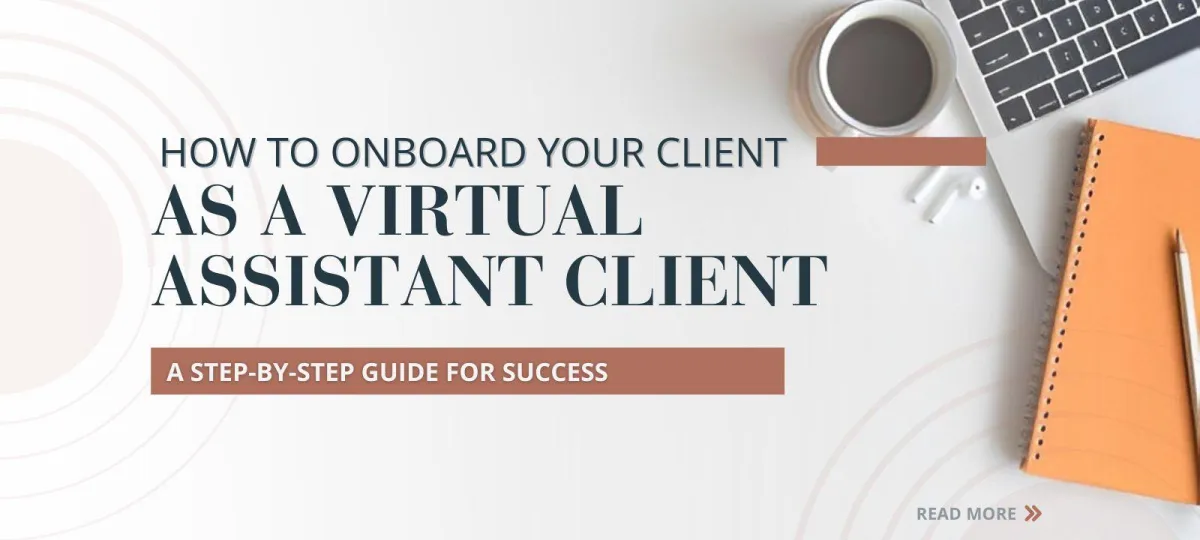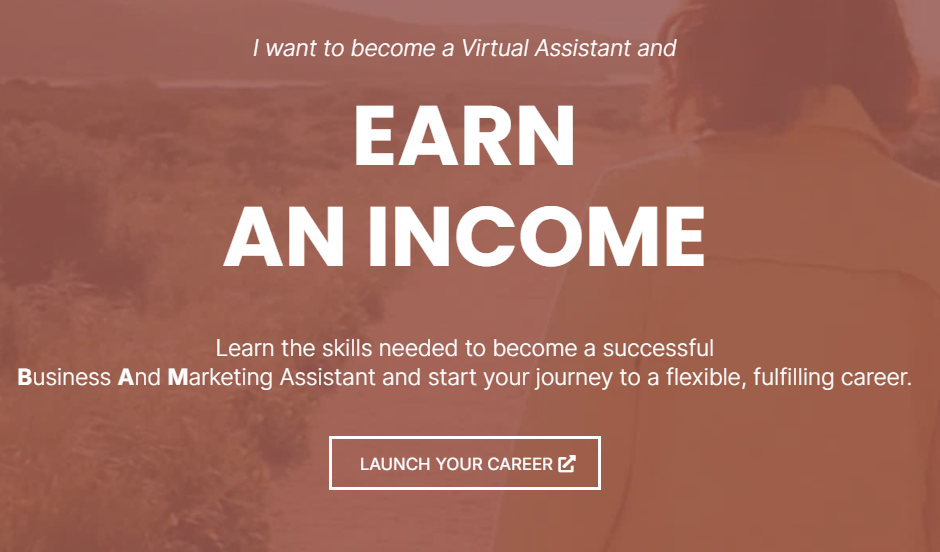
How to Onboard Your Client as a Virtual Assistant Client: A Step-by-Step Guide for Success
Congratulations on Signing Your New Client! What Comes Next?
First of all, congratulations on signing your new client! 🎉 This is a huge accomplishment, and it’s a clear sign that your hard work as a virtual assistant is paying off. Now that you’ve secured the client, you might be asking yourself: What’s next? How do you ensure this relationship starts off on the right foot?
The answer is simple: Onboarding!
A smooth, well-structured onboarding process is the secret sauce to building a long-term working relationship. It helps establish clear expectations, promotes transparent communication, and makes sure you and your client are aligned from the very start.
Start with a Welcome Kit
Before diving into the tasks and projects ahead, the first step in your onboarding process is creating a Welcome Kit. But what exactly is a Welcome Kit? Let’s break it down.
What is a Welcome Kit?
A Welcome Kit is essentially a curated package of information that guides your client through the initial steps of working with you. It’s a professional, yet friendly introduction that outlines your work processes, communication methods, and expectations for the partnership. It makes the client feel at ease and gives them a clear sense of what’s coming next.
Think of the Welcome Kit as the “orientation packet” for your client—a helpful guide to ensure that you’re both on the same page.
What Should Be Included in Your Welcome Kit?
Here’s a breakdown of what you should include in your Welcome Kit to set the stage for a successful onboarding experience:
1. Personalized Welcome Letter
Start by welcoming your client and thanking them for choosing you as their virtual assistant. This sets a positive tone and establishes a friendly connection. Be sure to mention that you’re excited to start working with them and explain what they’ll find in the Welcome Kit.
Example:
"Hi [Client’s Name], I’m thrilled to be working with you! I can’t wait to help you streamline your tasks and support your business goals. Inside this Welcome Kit, you’ll find everything you need to get started, including details about our next steps."
2. Overview of Services and Scope of Work
Even though you’ve likely discussed this during the hiring process, it’s essential to summarize the services you’ll be providing and outline the agreed-upon scope of work. This acts as a handy reference for both you and your client, ensuring there’s no confusion moving forward.
Example:
"Here’s a quick summary of the tasks I’ll be handling for you, including email management, social media scheduling, and monthly reports. If you need additional services beyond this scope, we can discuss how to best incorporate those!"
3. Communication Guidelines
Clear communication is the key to a successful working relationship. In this section, outline how you’ll be communicating with your client. Mention your preferred communication channels (e.g., Slack, email, Zoom), your business hours, and your typical response times. It’s also helpful to include instructions for how to flag urgent tasks.
Example:
"For quick updates or questions, I prefer using Slack. You can expect a response within 24 hours during my business hours (9 AM – 5 PM). For urgent matters, please feel free to send an email with ‘URGENT’ in the subject line."
4. Onboarding Questionnaire
To better understand your client’s needs, include an onboarding questionnaire. This helps gather important information like:
Current tools and software they use
Preferred communication methods
Branding guidelines (if you’ll be handling content creation or marketing)
Login credentials (shared securely via a tool like LastPass)
RELATED ARTICLE: Securing Your Business: Mastering Password Protection
This questionnaire will help you gain insight into their business and tailor your services accordingly, ensuring you’re aligned with their expectations from the start.
5. Next Steps & Kickoff Call
Let your client know exactly what the next steps will be. This could involve scheduling a kickoff call to review their business priorities, set clear expectations, and walk through any tools you’ll be using (like ClickUp, Trello, or Asana). Providing a timeline or roadmap for the first few weeks will help ease any uncertainty and get the ball rolling.
Example:
"Our next step is to schedule a kickoff call where we’ll go over the project management system, discuss priorities, and set deadlines. I’ll be sending over a link to schedule that shortly!"
Now that your client has received their Welcome Kit, you’re ready to dive into the onboarding process. Below is a detailed step-by-step guide to help you onboard your new client with confidence and clarity.
The Ultimate Guide to Onboarding Your Client as a Virtual Assistant: Step-by-Step Process
Step 1: Initial Discovery Call
Once your client reviews the Welcome Kit, schedule a discovery call to dig deeper into their business needs, goals, and pain points. Ask targeted questions to understand what tasks they want to delegate, their business priorities, and long-term objectives.
Step 2: Formalize Agreements with a Contract
After the discovery call, make sure to formalize everything with a written contract. This should outline the scope of work, payment terms, confidentiality clauses, and the agreed-upon deadlines. A clear contract protects both you and your client, ensuring there are no misunderstandings.
Step 3: Set Up Communication Channels
Determine your client’s preferred communication methods. Whether it’s Slack for quick updates or Zoom for meetings, choose tools that best suit both of your working styles. Establish a communication cadence (e.g., weekly check-ins) to keep progress transparent.
Step 4: Organize Tasks in a Project Management Tool
Next, set up all tasks in a project management tool like ClickUp, Asana, or Trello. Break down tasks into clear action items with deadlines and assign priorities. Share access with your client so they can track the progress and stay in the loop.
RELATED ARTICLE: How ClickUp Empowers Productivity and Streamlines Workflow
Step 5: Deliver Early Wins
One of the best ways to build trust early on is to deliver quick wins. Identify high-priority tasks that can be accomplished swiftly, and provide progress updates. This reinforces to your client that you’re proactive and reliable.
Step 6: Request Feedback
Once the onboarding phase is complete, request feedback from your client. Ask them how they found the onboarding process, if there are any adjustments needed, or if they have any concerns. This is your opportunity to fine-tune the partnership for long-term success.
Onboarding is a critical process that can make or break your client relationship. By starting with a Welcome Kit and following a structured step-by-step onboarding process, you’ll ensure your client feels confident, supported, and excited to work with you.
If you’re looking for more strategies to grow and streamline your virtual assistant business, consider checking out my course, She Works Virtually. It’s designed to help women like you build successful VA businesses from the ground up. Whether you're just starting out or looking to refine your skills, She Works Virtually provides everything you need—from setting up systems to marketing your services. Plus, you can even resell the course and earn an 80% commission!
Ready to take your virtual assistant career to the next level? Learn more about She Works Virtually here!


How to Onboard Your Client as a Virtual Assistant Client: A Step-by-Step Guide for Success
Congratulations on Signing Your New Client! What Comes Next?
First of all, congratulations on signing your new client! 🎉 This is a huge accomplishment, and it’s a clear sign that your hard work as a virtual assistant is paying off. Now that you’ve secured the client, you might be asking yourself: What’s next? How do you ensure this relationship starts off on the right foot?
The answer is simple: Onboarding!
A smooth, well-structured onboarding process is the secret sauce to building a long-term working relationship. It helps establish clear expectations, promotes transparent communication, and makes sure you and your client are aligned from the very start.
Start with a Welcome Kit
Before diving into the tasks and projects ahead, the first step in your onboarding process is creating a Welcome Kit. But what exactly is a Welcome Kit? Let’s break it down.
What is a Welcome Kit?
A Welcome Kit is essentially a curated package of information that guides your client through the initial steps of working with you. It’s a professional, yet friendly introduction that outlines your work processes, communication methods, and expectations for the partnership. It makes the client feel at ease and gives them a clear sense of what’s coming next.
Think of the Welcome Kit as the “orientation packet” for your client—a helpful guide to ensure that you’re both on the same page.
What Should Be Included in Your Welcome Kit?
Here’s a breakdown of what you should include in your Welcome Kit to set the stage for a successful onboarding experience:
1. Personalized Welcome Letter
Start by welcoming your client and thanking them for choosing you as their virtual assistant. This sets a positive tone and establishes a friendly connection. Be sure to mention that you’re excited to start working with them and explain what they’ll find in the Welcome Kit.
Example:
"Hi [Client’s Name], I’m thrilled to be working with you! I can’t wait to help you streamline your tasks and support your business goals. Inside this Welcome Kit, you’ll find everything you need to get started, including details about our next steps."
2. Overview of Services and Scope of Work
Even though you’ve likely discussed this during the hiring process, it’s essential to summarize the services you’ll be providing and outline the agreed-upon scope of work. This acts as a handy reference for both you and your client, ensuring there’s no confusion moving forward.
Example:
"Here’s a quick summary of the tasks I’ll be handling for you, including email management, social media scheduling, and monthly reports. If you need additional services beyond this scope, we can discuss how to best incorporate those!"
3. Communication Guidelines
Clear communication is the key to a successful working relationship. In this section, outline how you’ll be communicating with your client. Mention your preferred communication channels (e.g., Slack, email, Zoom), your business hours, and your typical response times. It’s also helpful to include instructions for how to flag urgent tasks.
Example:
"For quick updates or questions, I prefer using Slack. You can expect a response within 24 hours during my business hours (9 AM – 5 PM). For urgent matters, please feel free to send an email with ‘URGENT’ in the subject line."
4. Onboarding Questionnaire
To better understand your client’s needs, include an onboarding questionnaire. This helps gather important information like:
Current tools and software they use
Preferred communication methods
Branding guidelines (if you’ll be handling content creation or marketing)
Login credentials (shared securely via a tool like LastPass)
RELATED ARTICLE: Securing Your Business: Mastering Password Protection
This questionnaire will help you gain insight into their business and tailor your services accordingly, ensuring you’re aligned with their expectations from the start.
5. Next Steps & Kickoff Call
Let your client know exactly what the next steps will be. This could involve scheduling a kickoff call to review their business priorities, set clear expectations, and walk through any tools you’ll be using (like ClickUp, Trello, or Asana). Providing a timeline or roadmap for the first few weeks will help ease any uncertainty and get the ball rolling.
Example:
"Our next step is to schedule a kickoff call where we’ll go over the project management system, discuss priorities, and set deadlines. I’ll be sending over a link to schedule that shortly!"
Now that your client has received their Welcome Kit, you’re ready to dive into the onboarding process. Below is a detailed step-by-step guide to help you onboard your new client with confidence and clarity.
The Ultimate Guide to Onboarding Your Client as a Virtual Assistant: Step-by-Step Process
Step 1: Initial Discovery Call
Once your client reviews the Welcome Kit, schedule a discovery call to dig deeper into their business needs, goals, and pain points. Ask targeted questions to understand what tasks they want to delegate, their business priorities, and long-term objectives.
Step 2: Formalize Agreements with a Contract
After the discovery call, make sure to formalize everything with a written contract. This should outline the scope of work, payment terms, confidentiality clauses, and the agreed-upon deadlines. A clear contract protects both you and your client, ensuring there are no misunderstandings.
Step 3: Set Up Communication Channels
Determine your client’s preferred communication methods. Whether it’s Slack for quick updates or Zoom for meetings, choose tools that best suit both of your working styles. Establish a communication cadence (e.g., weekly check-ins) to keep progress transparent.
Step 4: Organize Tasks in a Project Management Tool
Next, set up all tasks in a project management tool like ClickUp, Asana, or Trello. Break down tasks into clear action items with deadlines and assign priorities. Share access with your client so they can track the progress and stay in the loop.
RELATED ARTICLE: How ClickUp Empowers Productivity and Streamlines Workflow
Step 5: Deliver Early Wins
One of the best ways to build trust early on is to deliver quick wins. Identify high-priority tasks that can be accomplished swiftly, and provide progress updates. This reinforces to your client that you’re proactive and reliable.
Step 6: Request Feedback
Once the onboarding phase is complete, request feedback from your client. Ask them how they found the onboarding process, if there are any adjustments needed, or if they have any concerns. This is your opportunity to fine-tune the partnership for long-term success.
Onboarding is a critical process that can make or break your client relationship. By starting with a Welcome Kit and following a structured step-by-step onboarding process, you’ll ensure your client feels confident, supported, and excited to work with you.
If you’re looking for more strategies to grow and streamline your virtual assistant business, consider checking out my course, She Works Virtually. It’s designed to help women like you build successful VA businesses from the ground up. Whether you're just starting out or looking to refine your skills, She Works Virtually provides everything you need—from setting up systems to marketing your services. Plus, you can even resell the course and earn an 80% commission!
Ready to take your virtual assistant career to the next level? Learn more about She Works Virtually here!

What I Offer
THE "SYSTEMIZE AND ORGANIZE" COURSE
Are you tired of being disorganized and inefficient? Do you feel like your business is running you instead of the other way around? If so, my "Systemize and Organize" course is perfect for you! This course will teach you how to streamline your operations and get control of your business. We'll start by looking at ways to streamline your schedule, so you can make the most of your time. Then we'll move on to organizing your workspace, so you can be more productive and efficient. And finally, we'll discuss how to develop systems for handling common tasks, so you can free up even more time for the things you love. By the end of this course, you'll have all the tools you need to take your business to the next level. So what are you waiting for? Enroll today!
What You Would Learn
Lorem ipsum dolor sit amet, consectetur adipiscing elit. Fusce id quam nec quam hendrerit viverra et vel massa. Mauris dictum elit dui, id imperdiet dui molestie at. Morbi a ligula blandit, pulvinar purus eu, feugiat ex.
Nulla sollicitudin elementum justo, vel malesuada ex dictum ut. Nullam imperdiet ante quis felis blandit auctor. Quisque hendrerit mollis varius. Donec euismod sapien vel lectus hendrerit, at vestibulum ligula varius. Morbi mi nibh, fringilla vitae nunc vel, luctus ultrices eros.
Lorem ipsum dolor sit amet, consectetur adipiscing elit. Fusce id quam nec quam hendrerit viverra et vel massa. Mauris dictum elit dui, id imperdiet dui molestie at. Morbi a ligula blandit, pulvinar purus eu, feugiat ex.
Nulla sollicitudin elementum justo, vel malesuada ex dictum ut. Nullam imperdiet ante quis felis blandit auctor. Quisque hendrerit mollis varius. Donec euismod sapien vel lectus hendrerit, at vestibulum ligula varius. Morbi mi nibh, fringilla vitae nunc vel, luctus ultrices eros.
Let's Make It Happen
Lorem ipsum dolor sit amet, consectetur adipiscing elit. Fusce id quam nec quam hendrerit viverra et vel massa. Mauris dictum elit dui, id imperdiet dui molestie at. Morbi a ligula blandit, pulvinar purus eu, feugiat ex.
Nulla sollicitudin elementum justo, vel malesuada ex dictum ut. Nullam imperdiet ante quis felis blandit auctor. Quisque hendrerit mollis varius. Donec euismod sapien vel lectus hendrerit, at vestibulum ligula varius. Morbi mi nibh, fringilla vitae nunc vel, luctus ultrices eros.
BUSINESS COACHING 101

Lorem ipsum dolor sit amet, consectetur adipiscing elit. Fusce id quam nec quam hendrerit viverra et vel massa. Mauris dictum elit dui, id imperdiet dui molestie at. Morbi a ligula blandit, pulvinar purus eu, feugiat ex.
SALES AND MARKETING

Lorem ipsum dolor sit amet, consectetur adipiscing elit. Fusce id quam nec quam hendrerit viverra et vel massa. Mauris dictum elit dui, id imperdiet dui molestie at. Morbi a ligula blandit, pulvinar purus eu, feugiat ex.
